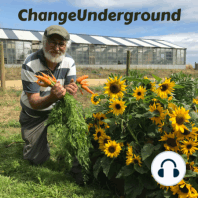15 min listen

76 Seaweed and Carbon Sequestration | #worldorganicnews 2017 08 07
76 Seaweed and Carbon Sequestration | #worldorganicnews 2017 08 07
ratings:
Length:
8 minutes
Released:
Aug 6, 2017
Format:
Podcast episode
Description
Links CONTACT: podcast@worldorganicnews.com How farming giant seaweed can feed fish and fix the climate https://kevinswildside.wordpress.com/2017/07/31/how-farming-giant-seaweed-can-feed-fish-and-fix-the-climate/ Sunlight and Seaweed: An Argument for How to Feed, Power and Clean Up the World **** This is the World Organic News for the week ending 7th of August 2017. Jon Moore reporting! This week we are focussing upon a piece entitled: How farming giant seaweed can feed fish and fix the climate from the blog Kevin's Walk on the Wild Side. This covers a new book by Tim Flannery: Sunlight and Seaweed: An Argument for How to Feed, Power and Clean Up the World. Links in the show notes. In the past, I’ve been surprised at some of Flannery’s statements. A while back he was surprised at how quickly solar rooftop panels had taken off in Australia. After all, he’s projected 2030 or thereabouts for the level of usage we achieved by 2015. Little did he realise that price signals, rising power bills and increasingly cheaper solar panels, would drive the uptake of this technology. In this book young Flannery seems to have cottoned onto the possibilities of price signals combined with science. The sort of thing which created the Industrial Revolution and should reverse its unpleasant side effects, just in time, we all hope. So to the article. Kelp, a form of seaweed much less studied than it should be. You will recall the huge drop off in cattle methane production when fed seaweed as part of their diet from a few shows back. The phenomena discussed on this occasion continues the greenhouse gas abatement line. Quote: The kelp draw in so much carbon dioxide that they help de-acidify the water, providing an ideal environment for shell growth. The CO₂ is taken out of the water in much the same way that a land plant takes CO₂ out of the air. But because CO₂ has an acidifying effect on seawater, as the kelp absorb the CO₂ the water becomes less acid. And the kelp itself has some value as a feedstock in agriculture and various industrial purposes. End Quote. The kelp then becomes part of the solution to our current situation. But it is a supercharged part of that solution. The startup problems are enormous and subject to the vagaries of weather. The example cited in the article and the book is that of an enterprise off the coast of New Haven, Connecticut. Beginning in 2011 the kelp farmer, Bren Smith, was wiped out by storms, twice, Hurricanes Irene and Sandy. His enterprise 3D Ocean Farming is now profitable and ecologically stable. Because once a critical mass is achieved, kelp forests will survive these storms. They are have further useful effects as the Chinese have been aware for centuries. Quote: The general concepts embodied by 3D Ocean Farming have long been practised in China, where over 500 square kilometres of seaweed farms exist in the Yellow Sea. The seaweed farms buffer the ocean’s growing acidity and provide ideal conditions for the cultivation of a variety of shellfish. Despite the huge expansion in aquaculture, and the experiences gained in the United States and China of integrating kelp into sustainable marine farms, this farming methodology is still at an early stage of development. End Quote There are other advantages to ocean cropping beyond those already discussed is the relative speed of growth. Seaweed grows like bamboo in the wet w=season and every season is the wet season for seaweed. Growth rates 30 times those of land based agriculture are common. This provides many opportunities. As trees remove carbon dioxide from the atmosphere to create timber so the growth rates of seaweeds suck much more carbon dioxide from the oceans than do trees from the atmosphere. As the oceans are huge carbon sinks, absorbing carbon as a buffer to excessive atmospheric carbon, they are also somewhat supercharged to feed seaweed. One of the consequences of ocean carbon absorption is the acidification of oceans. This in turn lea
Released:
Aug 6, 2017
Format:
Podcast episode
Titles in the series (100)
Supplemental 2 #worldorgnicnews 2016 06 09: Sponsored by www.jembiscuits.com Transcript: htt… by ChangeUnderground